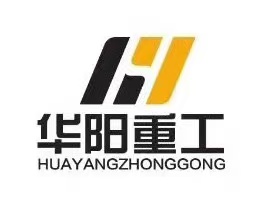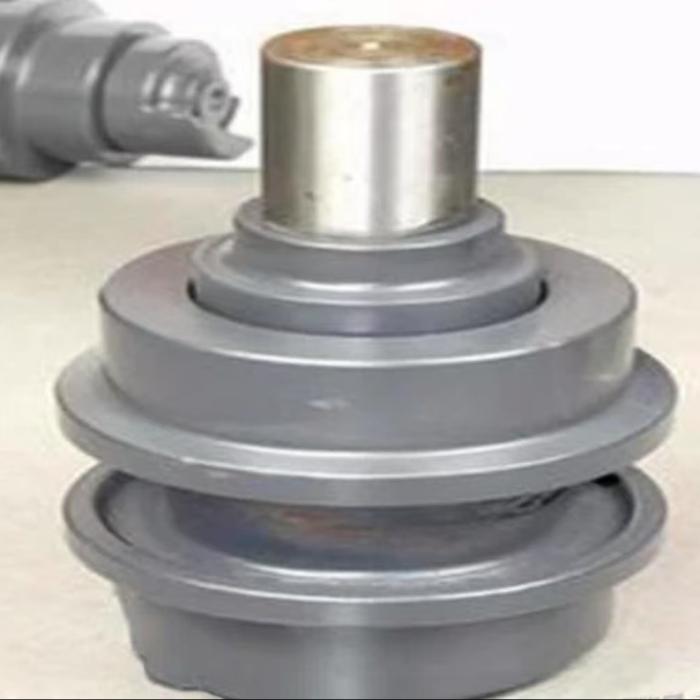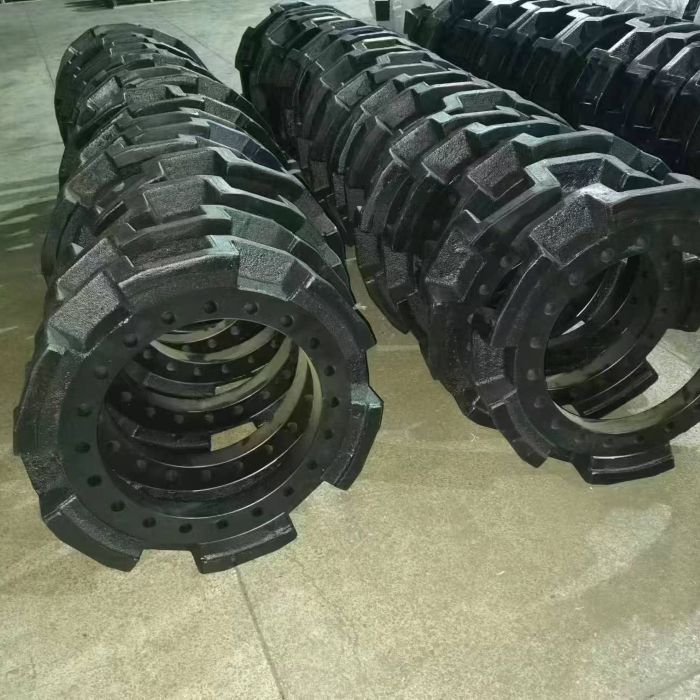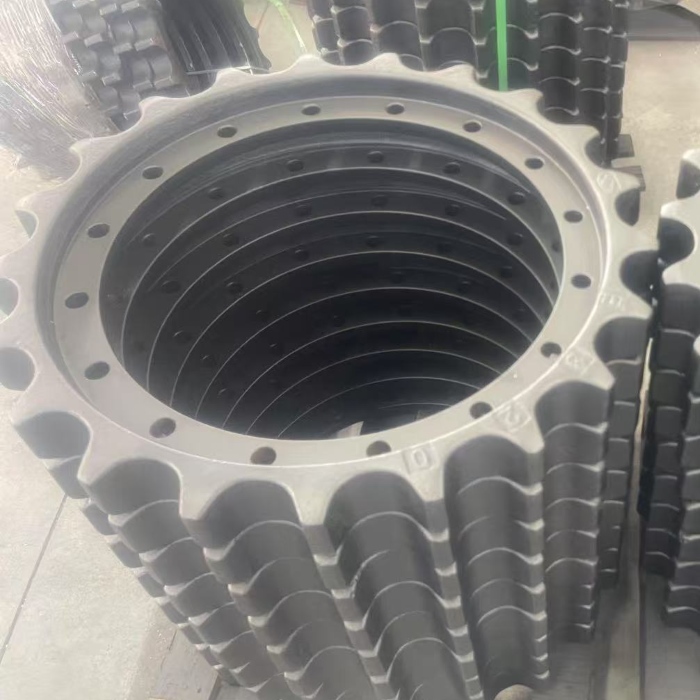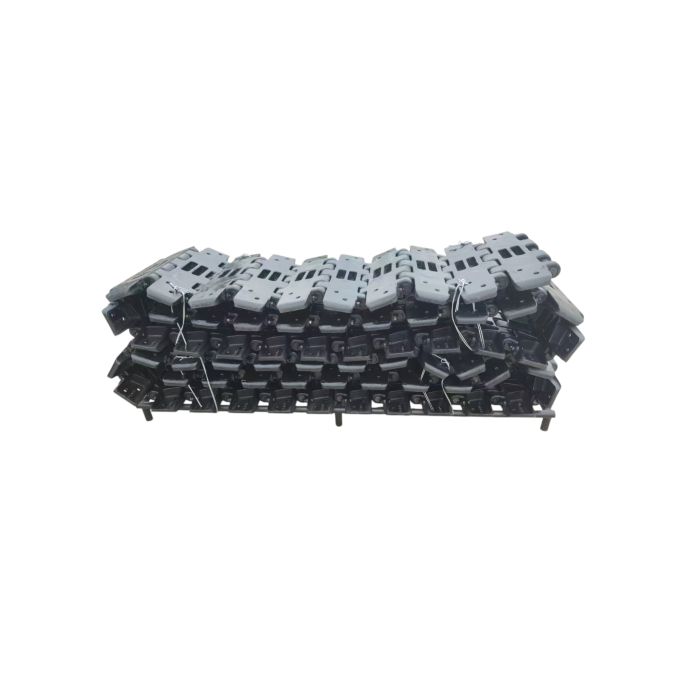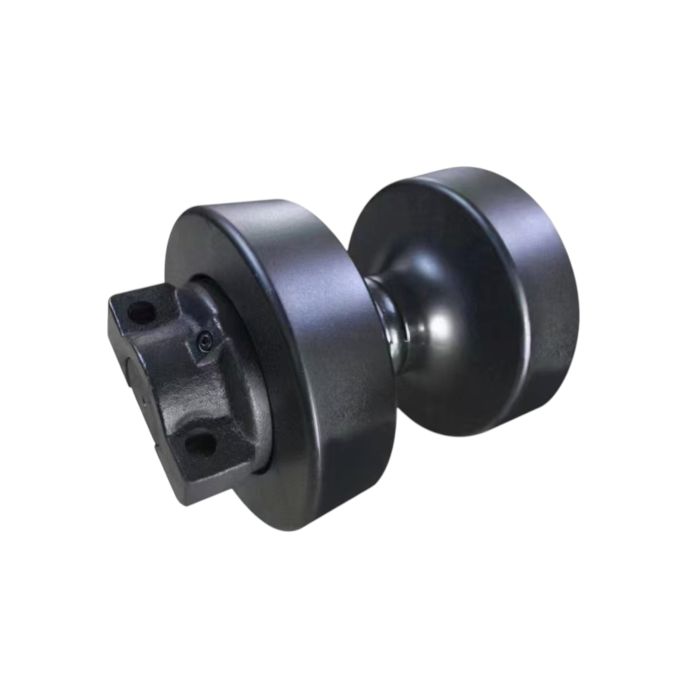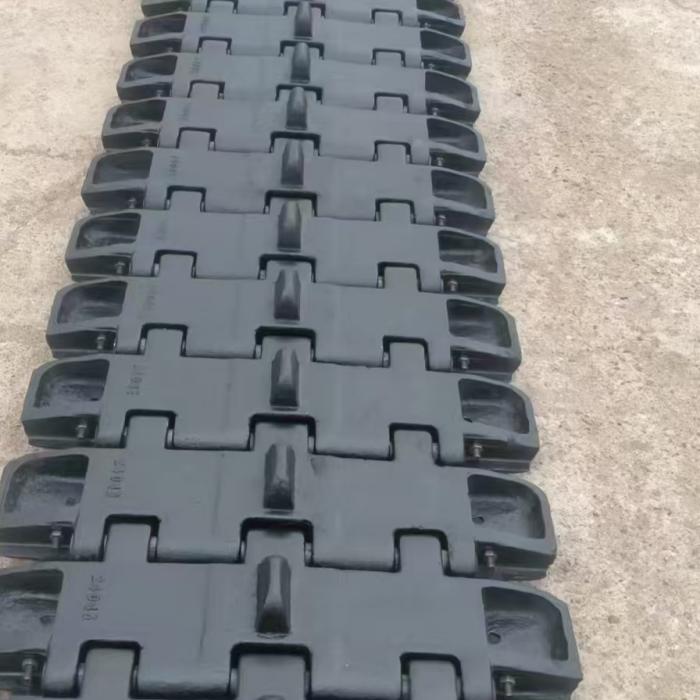We often hear our customers report that the excavator's supporting wheels are leaking oil, the sprocket wheels are broken, the walking is weak, and the track is inconsistent in tightness. These are all problems related to the four-wheel belt of the excavator. The four-wheel belt is directly related to the working performance and walking performance of the excavator. If you want the excavator to walk and move fast, maintenance is the key. The following are the maintenance methods related to the four-wheel belt:
1. Supporting wheels:
During work, you should try to avoid the supporting wheels being soaked in mud and water for a long time. After the work is completed every day, you should prop up the single-side track and drive the travel motor to throw away the dirt, gravel and other debris on the track. In winter construction, you must keep the supporting wheels dry, because there is a floating seal between the outer wheel of the supporting wheel and the shaft. If there is water, it will freeze at night. When the excavator is moved the next day, the seal will be scratched by the contact with the ice and cause oil leakage. Damage to the supporting wheels will cause many faults, such as deviation and weak walking.
2. Sprocket wheel:
The sprocket wheel is located above the X-frame. Its function is to keep the chain track in linear motion. If the sprocket wheel is damaged, the track chain track cannot keep straight. The sprocket wheel is injected with lubricating oil at one time. If oil leakage occurs, it can only be replaced with a new one. During work, try to avoid the supporting wheels being soaked in muddy water for a long time. Keep the X-frame inclined platform clean at ordinary times. Do not let too much mud and gravel accumulate to hinder the rotation of the sprocket wheel.
3. Guide wheel:
The guide wheel is located in front of the X-frame. It consists of a guide wheel and a tension spring installed inside the X-frame. Keep the guide wheel in front during operation and walking, so as to avoid abnormal wear of the chain track. The tension spring can also absorb the impact of the road surface during work and reduce wear.
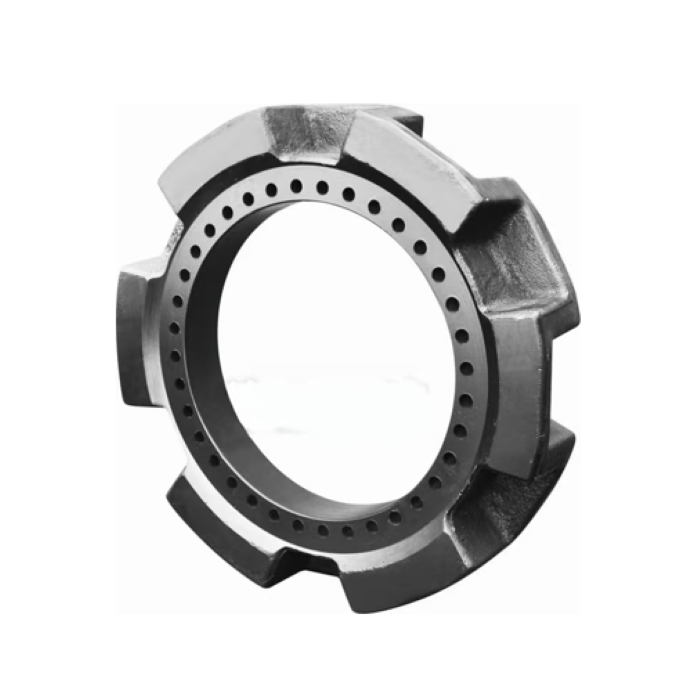
4. Driving wheel for excavator:
The driving wheel for excavator is located at the rear of the X-frame. Because the driving wheel for excavator is directly fixed on the X-frame and has no shock absorption function, if the driving wheel for excavator is moving in front, it will not only cause abnormal wear on the drive gear ring and chain rail, but also have an adverse effect on the X-frame, and the X-frame may have problems such as early cracking. The travel motor guard can protect the motor, and at the same time, some soil and gravel will enter the internal space, which will wear the oil pipe of the travel motor. The moisture in the soil will corrode the joint of the oil pipe, so the guard should be opened regularly to clean the dirt in the driving wheel for excavator.
5. Track:
The track is mainly composed of track shoes and chain rail sections. The track shoes are divided into standard shoes and extended shoes. Standard shoes are used for earthwork conditions, and extended shoes are used for wetland conditions. The wear of track shoes is the most serious in mines. When walking, gravel sometimes gets stuck in the gap between the two plates. When it turns to contact with the ground, it will squeeze the two plates, and the track shoes are prone to bending and deformation. Long-term walking will also cause cracks in the bolt fixing parts of the track shoes. The track link is in contact with the driving gear ring and is driven by the gear ring to rotate. Too tight track tension will cause early wear of the track link, gear ring and guide wheel. Therefore, the track tension should be adjusted according to different construction road conditions.
Huayang Heavy Industry has nearly 10 years of experience in the industry. We have also established a series of inspection processes for our products, including:
Dimension inspection (caliper, micrometer, gauge, etc.).
Hardness test (Brinell/Rockwell hardness tester).
Flatness inspection, hole deviation inspection.
On-site assembly sampling.
Anti-corrosion coating thickness inspection.
Packaging firmness review.
Each batch of products must undergo comprehensive quality inspection before leaving the factory. Only after passing the test can the product enter the packaging stage. What customers get is a "real usable product" rather than a "sample with qualified data".
